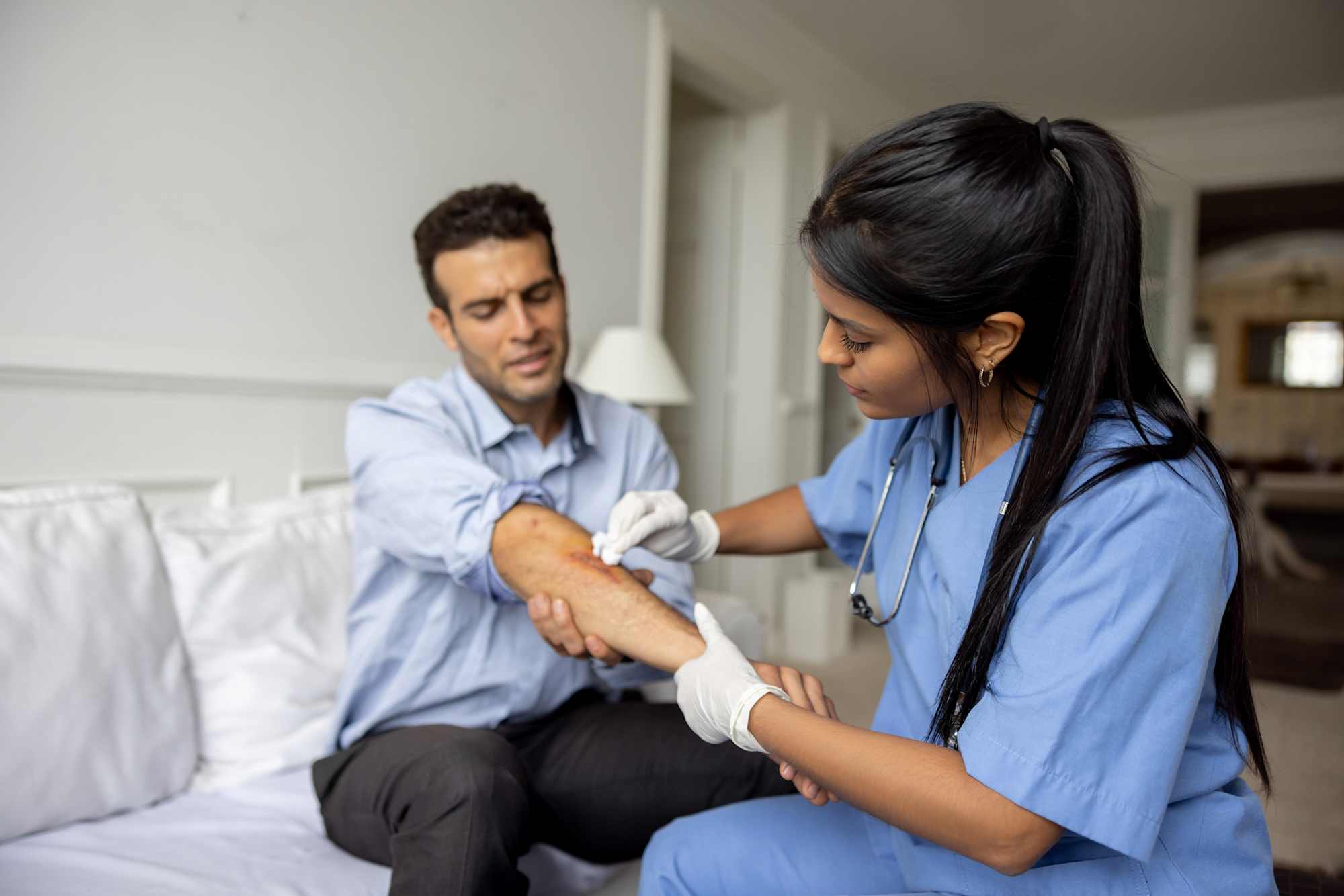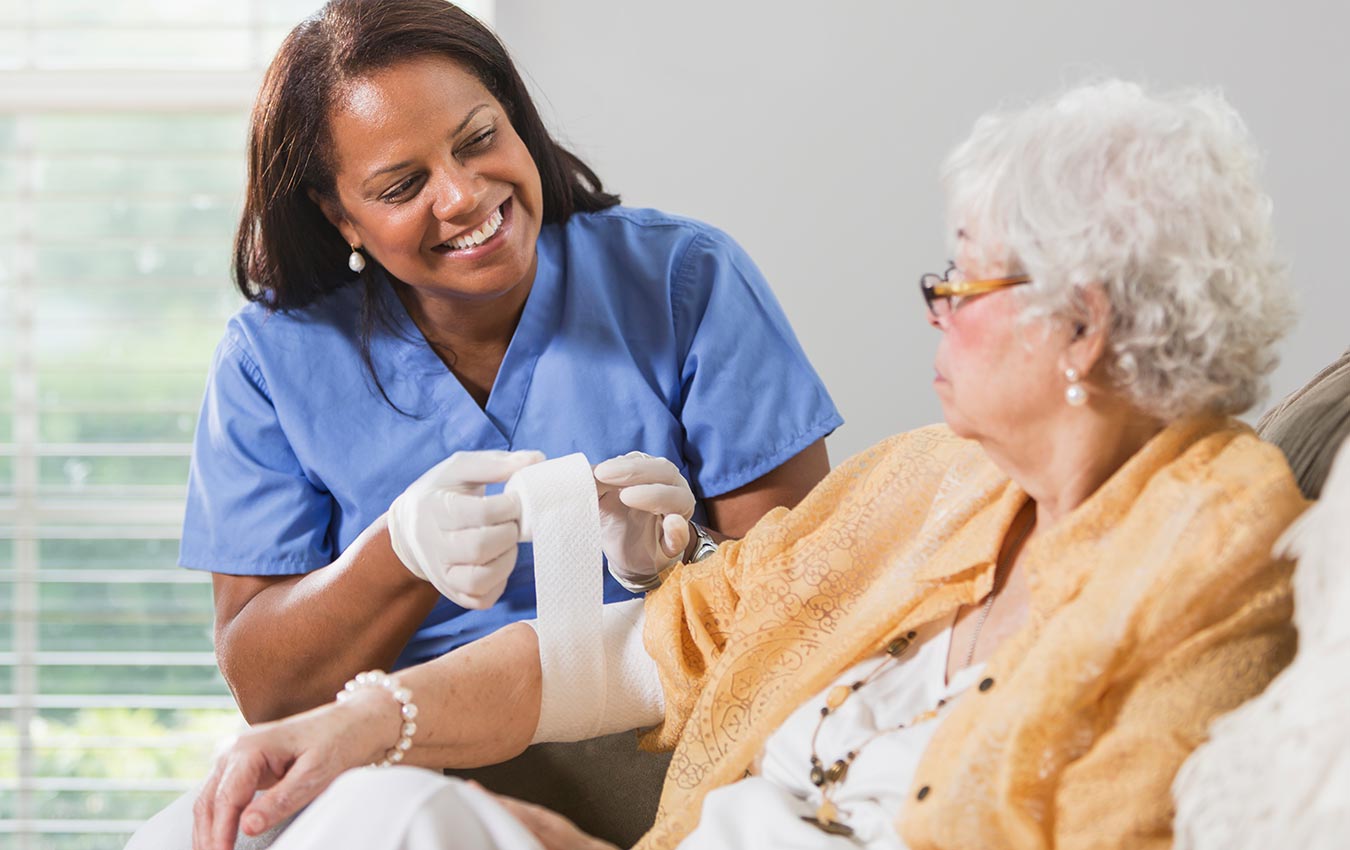Introduction
Wound care monitoring is an important facet of health care, particularly in the therapy of persistent injuries and complicated injuries. Whether it's a basic cut or an extra complicated abscess, efficient wound administration can substantially influence healing outcomes. Proper approaches not just expedite healing yet likewise reduce the danger of infection and complications. As medical care professionals, understanding these techniques is vital. In this write-up, we dive deep right into Wound Care Monitoring: Strategies for Successful Outcomes, including various aspects such as training for specialists, nursing education and learning, and advanced methods for managing intricate wounds.
1. Understanding Wound Care Management
1.1 What is Wound Treatment Management?
Wound care management refers to the systematic method to dealing with wounds via proper evaluation, diagnosis, and therapy methods. It includes whatever from cleaning and dressing injuries to surveillance recovery progress.
1.2 Significance of Wound Care
Effective wound care is crucial since it aids stop infections, advertises faster healing, and ultimately decreases healthcare expenses connected with long term treatments.
2. Types of Wounds
2.1 Acute Wounds
Acute wounds are those that recover quickly without complications. They usually arise from surgery or unexpected injuries.
2.2 Persistent Wounds
Chronic wounds continue in time and are typically connected with hidden problems such as diabetic issues or vascular disease.
3. The Function of an Injury Care Specialist
3.1 What Does an Injury Care Professional Do?
An injury care expert focuses on diagnosing and dealing with numerous types of wounds using specialized expertise and techniques.
3.2 Training Needed for Specialists
To come to be a wound treatment expert, one need to undergo rigorous training that consists of both theoretical knowledge and practical skills.
4. Wound Care Professional Training
4.1 Introduction of Training Programs
Training programs for injury treatment experts vary widely however typically include coursework on anatomy, physiology, and the most up to date injury treatment technologies.
4.2 Qualification Options Available
Various companies provide accreditations in wound care management that enhance reliability and knowledge in the field.
5. Wound Care Educating for Nurses
5.1 Significance of Specialized Training
Nurses play a critical function in individual treatment; hence, specialized training in wound management is important for providing top quality healthcare services.
5.2 Curriculum Parts in Nursing Programs
Most nursing programs currently include modules concentrated on basic wound care training to outfit nurses with fundamental abilities called for in scientific settings.
6. Wound Treatment Educating Courses
6.1 Online vs On-site Courses
With the rise of electronic discovering systems, numerous specialists are opting for online wound care training courses that offer versatility without endangering on quality.
6.2 Training course Material Overview
Typical course web content consists of anatomy relevant to wound healing, best practices in dressing application, infection control procedures, among others.
7. Basic Wound Care Training Essentials
7.1 Trick Abilities Acquired With Basic Training
Basic wound care training furnishes people with abilities like cleansing techniques, applying dressings properly, and identifying indications of infection.
7.2 Significance of Hands-on Practice
Theory alone isn't enough; hands-on practice is vital for creating confidence and effectiveness in managing injuries effectively.
8. Advanced Strategies in Complex Wound Care
8.1 Recognizing Complex Wounds
Complex injuries require customized interventions because of their nature-- usually including deeper cells or underlying health concerns that hinder recovery processes.
8.2 Therapy Modalities
Advanced techniques include unfavorable pressure injury therapy (NPWT), bioengineered tissues, and various other cutting-edge techniques customized to promote healing in complex cases.
9. Chronic Wound Care Management Strategies
9.1 Identifying Underlying Causes
Identifying the origin of chronic injuries-- be it poor circulation or http://connerhulx659.lowescouponn.com/a-complete-overview-to-wound-care-training-for-nurses-what-you-need-to-know diabetes mellitus-- is essential for effective treatment plans.

9.2 Multidisciplinary Approach
An effective chronic injury management strategy often involves cooperation amongst various healthcare providers including dietitians, podiatrists, and physical therapists.
10. The NDIS (National Special Needs Insurance Coverage Scheme) & Injury Care
10.1 NDIS Assistance Services
For people under the NDIS structure requiring recurring wound monitoring support services are crucial to guarantee they receive proper care customized to their needs.
10.2 Financing Options Available
Understanding funding options readily available via NDIS enables clients to access needed treatments without monetary burden.
Frequently Asked Questions (FAQs)
Q1: What certifications do I need to come to be an injury care nurse?
A: Typically needs a nursing degree together with specialized certification in injury monitoring obtained through recognized programs or programs focused on nursing wound treatment training.
Q2: For how long does it require to complete a wound care training course?

Q3: Can I manage my very own persistent wounds at home?
A: While some patients can take care of small chronic injuries at home with correct education and learning from healthcare providers, extreme cases must constantly be evaluated by experts to prevent complications.
Q4: Why is infection control vital in injury management?
A: Infection control stops difficulties that can develop from untreated infections which might delay healing or result in much more serious health and wellness concerns requiring considerable clinical intervention.
Q5: Are there particular items suggested for persistent wound management?
A: Yes! The choice of items depends upon the kind of chronic wound; common options include hydrocolloid dressings, alginates, foam dressings etc, tailored based upon individual requirements assessed by healthcare providers.
Q6: Is there continuous education and learning available after preliminary certification?

Conclusion
In conclusion, effective Wound Treatment Monitoring: Strategies for Successful Outcomes depend greatly on knowledgeable professionals that understand both standard concepts and advanced methods necessary for promoting optimal recovery conditions across diverse individual populaces-- from acute injuries needing instant attention to complex persistent injuries calling for recurring analysis and intervention approaches customized towards holistic wellness objectives. By focusing on education via extensive training programs made specifically around evolving requirements within this vibrant area-- health care experts can boost their capacity supplying outstanding service while guaranteeing positive client experiences producing successful results over time.